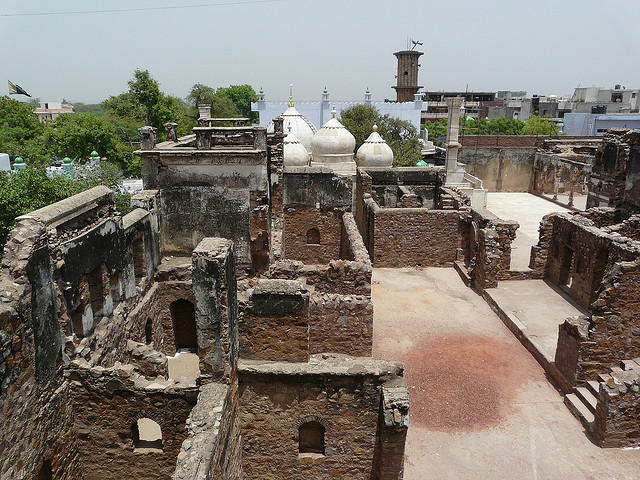Zafar Mahal, in Mehrauli village, in South Delhi, India is considered the last monumental structure built as a summer palace during the fading years of the Mughal era. The building has two components namely, the Mahal or the palace, which was built first by Akbar Shah II in the 18th century and the entrance gate that was reconstructed in the 19th century by Bahadur Shah Zafar II, popularly known as “Zafar” (the nom de plume of Bahadur Shah II) meaning ‘Victory’. It has a forlorn history because Bahadur Shah Zafar who wished to be buried at a selected burial ground, precincts of the Zafar Mahal (palace) in Delhi and the famous Dargha of Khwaja Qutubuddin Bakhtiar Kaki, was deported by the British to Rangoon, after the 1857 First War of Indian Independence called the Sepoy Mutiny or Upraising, where he died of old age without any honour.
A masjid (mosque) called the Moti Masjid (pearl mosque), built by Bahadur Shah I (d.1712), was a private mosque of the royal family, which has now been subsumed within the palace precincts. The mosque is a small and unique three-domed structure made of white marble. Its construction is also credited to Bahadur Shah.
http://www.flickr.com/photos/varunshiv/3703707660/in/photostream
http://www.flickr.com/photos/varunshiv/3703696742/in/photostream
http://www.flickr.com/photos/varunshiv/3703701780/in/photostream



